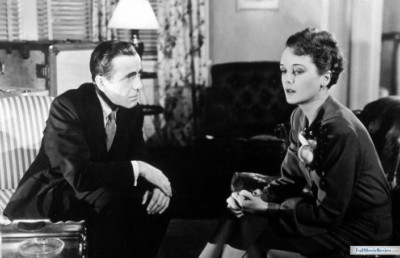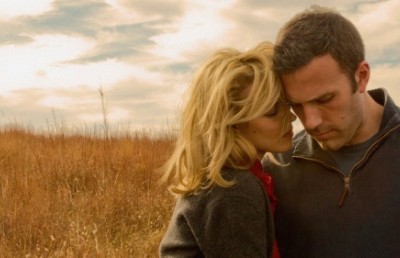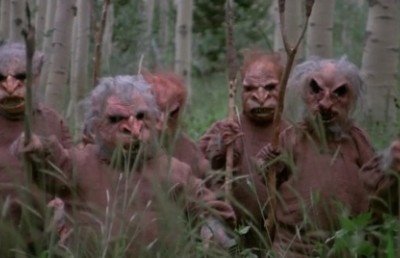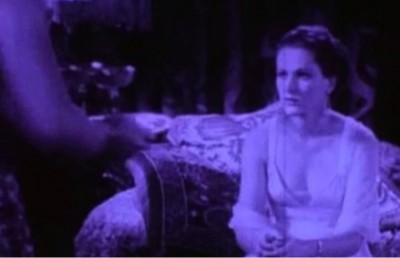London Made Me: Personal History, Film History and My Home Town
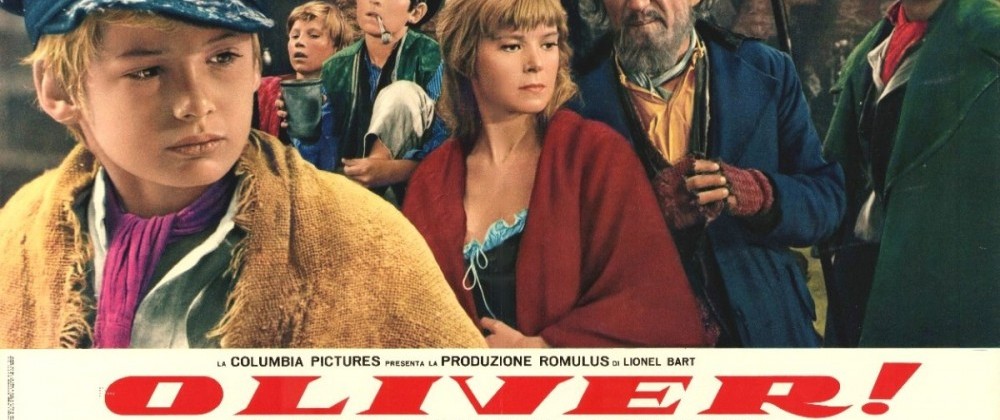
We all have periods in our lives when we find ourselves particularly prone to retrospection. For myself, as a cinephile, as someone with a deep, even obsessive passion for cinema, the deaths of both Ingmar Bergman and Michelangelo Antonioni on July 30, 2007 marked such a period. Although I had met neither of these filmmakers, their passing struck me hard. This was particularly true in the case of Bergman, whose film Virgin Spring (1960) was the first so-called art film I’d ever seen, probably when I was about 18. I’d seen the film on TVO’s Saturday Night at the Movies, hosted by the irrepressibly enthusiastic film lover, Elwy Yost. I had certainly seen lots of films before then, but when I saw Bergman’s film I remember being affected in a way that no film before had affected me, even though I was far from being able to understand it. I think now that what had so struck me so deeply was the way Virgin Spring served as a powerful testament to the fact that at their best films could be as complex, as mysterious and as moving as other great works of art.
But even more disturbing than the actual passing of Bergman and Antonioni had been the emphasis in many of the eulogies for these masters on the presumed demise not only of an era of film history but of the possible death of cinema itself. As someone who has spent thousands of hours of my waking life watching movies, talking about them, thinking about them, I can tell you that this kind of challenge to one’s notion of self-validation can come as a bit of a jolt. It is conducive, to say the least, to stock-taking. And in investigating the roots of my own cinephelia I’ve been lead to concede, almost grudgingly, that the place where I grew up provided much of the fertile soil that enabled those roots to take hold. I say grudgingly, because on the face of it, London, Ontario would not seem to be a very auspicious place to initiate and nurture a life time love of movies. Paris (France) certainly, New York most definitely, the other London absolutely, but London, Ontario?
Yet, London it was that provided the locale of my first film going experiences, and for much of my film going in the first 20 years of my life. I was born in 1957 and when I was a kid, London felt more like a small town than a city. The first house I lived in after I was born was right next to my maternal grandparents’, a really small house that backed on to the Thames River. When I was 18 months old, my parents moved us into a home of our own, a house with two acres of land just on the edge of what was then the city limits. Several of our neighbors were then farmers. But perhaps it was the rural feel of where I lived that that made downtown London seem so exotic in contrast. London’s downtown is now struggling to rediscover its identity, but when I was growing up the city’s main intersection at Dundas and Richmond streets was a lively hub, and downtown London boasted several first run cinemas of quite capacious size, including the Capitol and Century Theatres which were only a few doors apart. Even though downtown London was only a few kilometres away from our house, it felt like a different world from where I actually lived.
I’ve always been fascinated by the potency for many people of their first memories of films. I’ve noticed when I’ve asked questions of students about this in my classes that such recollections of first or at least early film viewing run deep, and are deeply subjective. I have also noted with interest that for many of my students, the circumstances of the viewing and who was with them, are often as central in these narratives of early film viewing as the film itself. And even when members of a given generation of students often share an iconic film, the impressions of why that film is important to them vary widely. For example, for what seems like a whole generation of my students, E.T. the Extra-Terrestrial (1982) has been a seminal film, but the reasons for finding it powerful are as different and as numerous as the viewers who have found it so.
In my case, it isn’t a particular Disney classic or commercial blockbuster that stands out as the primordial ur-film. Rather, my first vivid memories of seeing films in a public place involves going out to watch travelogues at a downtown high school, Beal Tech, with my mother. Looking back, there are a number of aspects of these outings that made them special enough to linger so long in memory. First, I was very young, probably around 7 or 8. And, the screenings not only took place in what struck me then as an inordinately large building for a school, but a school, no less, located right downtown. But what particularly stands out for me about these evenings are two memories: that the films themselves featured what seemed like an endless parade of water skiers in exotic locales, and, most importantly, that the proceedings always started with everyone in the auditorium standing for ‘God Save the Queen’. I am certainly no royalist, but to this day, I have retained a predisposition to experience cinema in the public sphere where the aspect of a group ritual is most pronounced. I wouldn’t have used such a polysyllabic word as “documentaries” to describe them then, and it is probably questionable whether these little promotional films for Travel Agencies would be worthy of that term. But, primitive though they were, they were my Lumières, my experience of the birth of cinema, and as such they have left an indelible mark.
One impact of these evenings involves the intrinsic importance of film-going to me, especially if that experience involves going to a cinema. Let me put it this way: I’ve met a lot of films I didn’t like, but the very fact of meeting them (particularly if the encounter was in a cinema) has predisposed me towards them. If pressed, I can put critical discrimination into play as well as the next academic. But, frankly, it always seems like something of a betrayal. Even if I know it is bad, how can I savage a film when I had so much fun watching it? Of course, there are films that seem to go particularly out of their way to insult our intelligence, but I have to admit that I have seen very few films that didn’t have at least some redeeming quality.
Readers with a bent toward psychoanalysis will have probably already raised their eyebrows at my description of watching films with mother. The womb-like darkness of the cinema; the only (male) child sitting next to the female who bore him. Who could blame a Freudian for seeing this scenario as emblematic of the child’s desire for escape from the world’s cares, a desire he retains even into adulthood? But it is only in recent years that I’ve fully appreciated some of the complex psychological shadings to this situation.
Shortly after my mother’s death, in 2005, I read the journal I had previously known she had been sporadically working on over the previous several years. This diary was ostensibly a profile of her father, whom she idolized, but she had told me enough about the kind of things she was putting into it for me to realize that, whether she acknowledged it to herself or not, it was really as close to a confessional as someone as her was likely to write. Of course, I always knew that my mother was a deeply anxious person, and I’d heard enough stories to realize that she’d had at least a couple of nervous breakdowns. What I hadn’t known, and that the journal made clear, is that she had when only a young adult been diagnosed with what at that time was called a state of “chronic anxiety.” Sadly, this was an era when such issues where clouded in secrecy. She never told me about this diagnosis, and, even if she and/or her parents had been more proactive about her situation, psychiatric strategies for dealing with mental illness remained rudimentary at that time. So, my mother went her whole life suffering the sometimes harrowing consequences of untreated mental illness. I am now convinced that movies were for her more than the usual kind of escape. Sitting there in the dark of a cinema she was able to enjoy at least a brief interval of relative respite from depression. And I don’t think that the content of the films we were watching in our earliest years of film going together is irrelevant: as crude as many of them were, those travelogues were about being somewhere else, about the possibility of being someone else, and I am sure that watching them was a way for my mother to try, if only for an hour or two, to get outside of her own head.
The other iconic memory I have of going to the movies with my mother involves seeing Carol Reed’s Oliver! (1968) when it first came out. In earlier years, watching those crude but mesmerizing travelogues had certainly provided the germ of my interest in watching documentaries, which has remained a life long passion. With Oliver! and earlier films like Mary Poppins (1964) and The Sound of Music (1965) something different was going on: people in more or less plausible situations were improbably breaking into song. I won’t pretend to have thought through the implications of this at the time, but I now realize that those films provided the germ of my frequent impatience with cinematic verisimilitude. Although I wasn’t introduced to Méliès’ films until much later, I don’t think it is accidental that one of the original wellsprings of cinema was brought to us by a magician.
My wife has told me a remarkable (and true) story which I pass along here with her permission. As a high schooler in Woodstock, Ontario she had quite a distance to walk to school. One day while taking a shortcut through a field, a bird that she thought to be a crow alighted nearby and spoke to her. In English. As you can imagine, doubting her own sanity was my wife’s first response, and her second was to wonder whether she should ever tell anyone about this. As it turned out, this bizarre situation had a rational explanation: some exotic pet birds, probably mynas, that did boast a smattering of English, had escaped from the nearby home of their owner. My favorite part of this story is of the bird talking to my wife, not the rational explanation. What is great about cinema is that it has the capacity to feature birds that talk to us, without there having to be a logical explanation.
This outlook toward cinema is certainly linked with my fondness for what some critics would consider lowbrow genres: cartoons, science fiction and fantasy films, and many films in the admittedly problematic category of the “children’s film”. But I think this outlook is also a part of what draws me to certain auteurs who share a capacity to explore the bizarre in the world and in themselves. I would be the first to admit that the differences are more important than the similarities in directors like Luis Bunuel, Federico Fellini, Emir Kusturica and David Cronenberg. But I do think they share an ability to use the bizarre to yield truths about the human condition. For example, Emir Kusturica’s Black Cat, White Cat (1998) is filled with scenes of antic behavior that defy written description. One recurrent motif, for example, involves a shot of an enormous pig eating a rusty car. In real life I’ve never seen a large pig eat a rusty car and I don’t expect to. But Kusturica not only enables us to have this admittedly bizarre experience vicariously, he also somehow makes our appreciation of life richer by this celebration of its more implausible aspects.
For most of my early years my mother and father both worked outside of the home and I was virtually raised by my maternal grandmother. One of the more interesting aspects of spending long hours in her house was that she had cable television long before my parents did. So, unlike some Ontario children of my era who have memories of growing up in total thrall to the CBC and its (then) single English station, I had access to several American channels, including one from Detroit.
The allure of an American television station for me at that time cannot be understated, but perhaps needs to be put into a larger context. On one level, I was probably a fairly typical Canadian kid of my generation in terms of my fascination with American culture: tv, comics, movies, music, etc. If it was American, there was an implicit assumption that it was probably good, or at least more exciting that its Canadian counterpart would be. But beyond the general interest in American culture there was the specific fascination with Detroit, a fascination the intensity of which is probably hard to appreciate for younger readers, especially now that Detroit is a city which has wrestled with decline for many years. London, keep in mind, is roughly half way between Toronto and Detroit. It’s hard to believe now, but when I was a child, the currency exchange rate was in our favor as Canadian travellers. So, when I was growing up we often took trips to Detroit, less often to Toronto. Detroit was my first experience of a large metropolis, the Detroit Institute of Arts was the first real art gallery I visited, and It’s A Mad, Mad, Mad, Mad World (1963), is the first film I can remember seeing in a huge, bona fide movie palace, in Detroit. Rather abruptly our Detroit trips seemed to stop, and only in recent years, after reading Nino Ricci’s story “Going to the Moon” did I come to realize that the Detroit riots of 1967, described at the end of that story, was what brought the curtain down on those expeditions.
Yet, as a kid I was blithely ignorant of the implications of the civil unrest just across the border, and if the trips to Detroit stopped, the love affair with Channel 2 Detroit did not. And the chief barometer of this station’s quality to my mind was that it carried the Sir Graves Ghastly show on Saturday afternoons, beginning in 1967. The show aired on Saturdays and functioned as a kind of sustained preamble to a double feature of horror films. Sir Graves was a putative vampire who could be seen rising from his coffin at the beginning of the show to the strains of mock-spooky music. Sir Graves and the show he helmed, weren’t really scary. With his bad makeup and cackling horror laugh, he was an embodiment of camp long before I knew the meaning of the word. So, even though Sir Graves was introducing horror films, an atmosphere of fun pervaded the proceedings. Even though I watched dozens of horror films on that show (I still remember that they did a marathon series of films every Halloween) it’s Sir Graves I still remember, exuding his curious blend of self-parody, bad makeup and the macabre. Perhaps this early association between Sir Graves and the horror film partly explains why I have often enjoyed horror films, but have seldom been truly frightened by them. Indeed, I have often found horror films funny that the viewer next to me in the cinema is clearly being creeped out by, with the result that the discomfort of said viewer is further exacerbated by also being creeped out by me as I sit there laughing.
Imagine my feeling of déjà vu when, in thinking about Sir Graves for my writing of this little memoir, I was prompted to check the web for references to the show. Sure enough, popping up first on the list in my google search was www.sirgravesghastly.com. I am a sucker for this kind of discovery, one that offers the kind of strange but admittedly problematic validation that comes from realizing that others were into the same cultural phenomenon as me. The net can give us the seductive illusion that we can excavate our own past, when what we are really constructing is our own recreation of the past. Watching the video posted on the site of the show’s opening was like unspooling a vivid memory. But I use the word “illusion” advisedly here. Looking at the Sir Graves website in the context of having watched the show over 37 years ago, certainly conveys a strong sense of linkage between my present and my past. But whether I am recalling the show itself, or the show as filtered through my more recent discovery of a website entirely devoted to it, memory proves fickle. I could have sworn that it was on that show that I’d seen a revival of William Castle’s Mr. Sardonicus (1961), one of the few horror films that I remember being genuinely terrified by. But I couldn’t find the film on the webmaster’s list of films screened on the show. Had I misremembered when I’d seen the film? Could this film stand out as truly scary because I had seen it at an even younger, more impressionable age than I had thought? Intriguing questions, perhaps, but not ones that memory is willing to answer.
As a cinephile I have had more than my share of miraculous years, but one annus mirabilis along the way of particular note was 1966. That year saw the release of two films that never were deemed masterpieces but that certainly more than adequately addressed my fantasy of male adventure at the age of 9, The Silencers, and Our Man Flint. I’d been too young to appreciate the first Bond films on their initial release, and didn’t really click with that series until You Only Live Twice (1967). Matt Helm and Flint are both cool, but for different reasons. Where Helm (a perfectly cast Dean Martin) is a swinging drinker with insouciant charm, Flint (the brilliant James Coburn) is the disciplined, flinty ascetic. Both, of course, were deeply attractive to females, a fact that surely wasn’t lost on my budding libido.
Earlier, I mentioned my 1968 viewing of Oliver! as an iconic one. Looking back, I can see that as an 11 year old out to the movies with my mom, I was having one of the last of the kind of experiences that would not continue into adolescence. Thereafter, going to the movies would be something I would do with friends, and the films we watched throughout the 70s would involve lots of sex, violence, action and other kinds of pleasure more suited to our teenaged tastes. Looking back now, I am astonished by the depths of my own ignorance of film history at that time. My introduction to the musical was in the 60s, when it could be argued that the genre was exhibiting the final gasps before its virtual demise. It wasn’t until the 80s that I would discover the classic musicals of Astaire/Rogers, Minnelli, Gene Kelly and Busby Berkeley. And, though I didn’t realize it at the time, Oliver! was one of the last films by Carol Reed, whose films like The Fallen Idol (1948), The Third Man (1949) and An Outcast of the Islands (1952) would only later enter my personal canon of favorites. With the dawn of the 70s I would take additional important steps in my evolution as a cinephile, but the development of any kind of historical sense on my part with regard to cinema would be a slow one, and far from methodical.
Looking back on the 1970s, there is a sharp dividing line for me between the early and later parts of the decade, a line that divides my high school years and my undergraduate years at university. My film viewing in the early 70s included all kinds of movies that would now be deemed as some or all of the following: politically incorrect; trashy; mindless; just plain bad. But in the spirit of the confessional, I have to admit that they were experiences of my adolescence that I would not want to have missed. The disaster cycle of films was most worthily represented by The Poisedon Adventure (1972), with Willard (1971) and Ben (1972) holding the fort nicely on the horror front. In the interests of full disclosure, I was an avid patron of the Carry On films, particularly Carry on Camping (1969), the sexist aspects of which I was not predisposed to be critical of in my early teens. The moment in that film when Babs’ (Barbara Windsor) bra pops off while she is exercising was a revelatory moment for me not only in terms of sexual pleasure but also with respect to the realization that cinema could be subversive, could push limits and challenge taboos. Though I would be the first to admit, now, that the likes of the Carry On films and The Benny Hill Show offered rather crass inscriptions of the male gaze, I would be a hypocrite not to admit that they were a staple part of my early 70s pop culture diet.
From the films listed above it will be apparent that I wasn’t thinking about auteurs in the early 1970s. Nor in my cultural isolation was I aware of the wider cultural implications of many of my experiences. As a nerdy, middle class white kid living in a (then) smallish Canadian city, Shaft (1971) was a revelation, but not of the kind whose significance was immediately clear. Shaft was cool, Isaac Hayes’ music was cool (and played constantly on the local top 40 station) but I didn’t see the film or Richard Rountree’s character as part of a wider phenomenon of African-American culture. In my own defense, I don’t recall many of the other so-called blaxploitation films that came out in the wake of that film’s popularity hitting London’s screens, which is a particular shame given the geographical proximity of London and Detroit, a city where such films would most certainly have been shown. So, notwithstanding its impact as an unheralded revelation, Shaft remained for me an oddity at that time, albeit a powerful one.
I indulged in movies galore in the 1970s, but I didn’t discover foreign art cinema until I started university. I am not the first person to have found university a definitive turning point, but that doesn’t minimize the immense power of it for those of us who felt like (and no doubt were) total geeks in high school. Finally, in university, pop cultural passions of various kinds could be pursued without having to feel odd. Or, even if you did feel odd, you could meet up with like-minded oddballs and feel some sense of solidarity. As an undergraduate studying English and Philosophy at the University of Western Ontario I wasn’t really aware of the fledgling developments that would lead to the creation of a respected film studies program there. But Western did have a film series, and I will be eternally grateful to whoever it was that gave me my first sustained taste of foreign art cinema by programming the films of Lina Wertmuller.
It is hard to imagine now the North American vogue for Wertmuller, but I remember seeing The Seduction of Mimi (1972); Love and Anarchy (1973), Swept Away (1974) and Seven Beauties (1975) all in quick succession in the late 70s. My first real encounter with subtitled films could have been a disaster. But the exuberance of the performances (for a time I wanted fervently to be Giancarlo Giannini), the earthiness of the humor and the memorable texture of the Italian language all made for a heady and, most importantly, accessible mix.
Film scholars tend to take for granted the necessity of reading subtitles as part of their job. But I’ve never lost a sense of gratitude for having had a successful initiation into subtitled films, and I know from being a film studies prof that not all students can make the leap. Prior to my exposure to Wertmuller’s films, virtually every film I’d seen had been from Hollywood, with the exception of a few British comedies. Now, with a proven capacity to handle subtitles, the cinematic world was literally at my disposal. Any culture that yielded a cinematic history could be savored (if not fully understood) as long as the films in question had legible subtitles. Yet, mixed with this sense of discovery came a profound sense of genuine humility: there will never be enough time to find out about all of the film cultures that exist, and for the ones I do explore, I’ll never more than scratch the surface of that cinema’s riches.
I turned 50 in 2007 (another catalyst, perhaps, for retrospection) so as of now, at the age of 58, I have been a bona fide cinephile for over 45 years. And for over half of those years, I have taught film and English courses at a number of universities. I’d be the first to admit that being a cinephile has not always been compatible with being a cinema studies academic. For one thing, my output on the film scholarship front has been modest: it has always seemed more alluring to watch 20 films in the time it would take to write an article about one. For another, there does seem to be a deeply romantic, anti-analytic aspect to cinephelia (at least to my cinephelia), in that films and watching them really seem to be important for their own sake.
Yet, I think that, at least for me, being a film instructor has served to counterbalance some of what might be called the more pathological aspects of cinephelia. During these last 20 years, it has been my job not just to convey to students my passion for cinema, but to endeavor to stimulate their own cultural passions, whatever their nature. I certainly know cinephiles who can consume films (whether at cinemas or on dvd or blu-ray at home) at an astonishing rate. Many of these same cinephiles boast private video collections worthy of an archive. But I have come to feel that the most important barometer of the authenticity of my cinephelia is not the number of films I’ve seen, but the degree to which I have endeavored to share my passion, not necessarily for specific films, but for the idea of cinema itself as an art.
This brings me back to the deaths of Bergman and Antonioni in 2007 , and to the current critical talk about the demise of the art film and about the death, perhaps, even of cinema itself. I admit that the gloomy prognostications currently in the air did initially give me a check, made me wonder if the passion that had anchored so much of my life was a chimera. And in my own recollection of the roots of that passion, there is ample evidence that, for me, cinema has often functioned as a kind of escape. But escape from what? Escape from the mundane, from life’s harsher realities, from one’s own inner demons? Is that kind of escape such a bad thing? Isn’t this just another way of saying that in cinema, as in any art, we find an embodiment of the very best of what humanity is capable of? That a devotion to cinema (or to any art) constitutes a dedication to the human capacity to create beauty, wonder and, yes, exquisite pleasure?
Yet, as an academic, I know that it is not enough to encourage students to watch films because it is fun to do so. Films deserve to be taken seriously because they provide insights into our own cultural contexts and into the cultural experience of others, and films often function to provoke us to question our own values, our place in society and even our own purpose in life. This is a grand claim to make about the cinema, and as a teacher of film studies, I fervently believe it to be true. But, I also know that I have no way of knowing whether a given film that I expose students to will be one that sparks their further pursuit of the subject, and, even if it is, the arc of that pursuit (the particular films they may be led to) is not necessarily ones that I have seen or even tell them about.
Every semester that I teach a film course I always end the course not with a lecture but with a film screening. What I tell my students, only half jokingly, is that I want their last impression of the course to be a film, not me. If I have done my job as an academic during the course, I will, perhaps, have succeeded in helping students sharpen their critical thinking about the films they will watch in the future and about the various forms of media that so totally saturate their lives. Of course, the irrepressible cinephile in me hopes that maybe I’ve helped beget a few more film buffs, too.
After 39 Years, Elwy Yost signs off:


